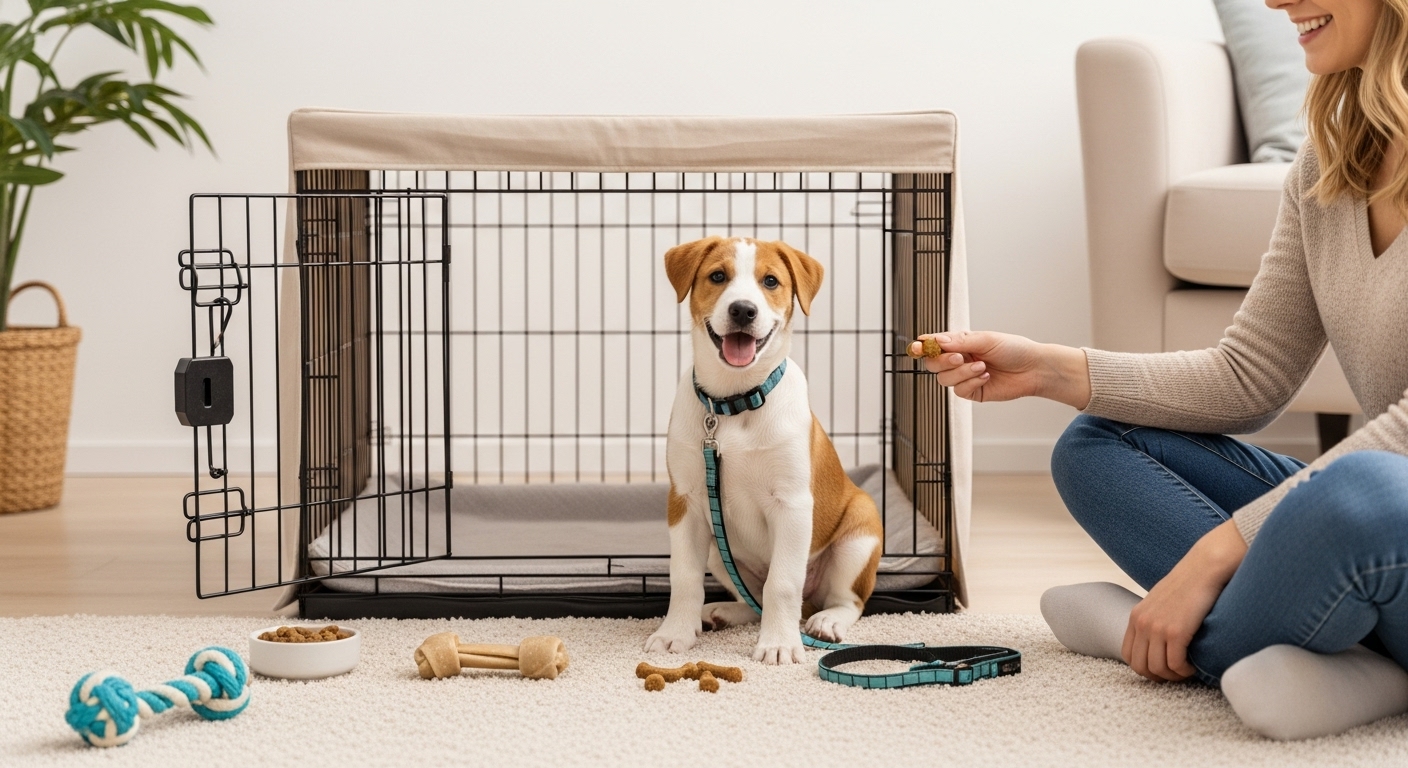Hey 🐶 Bringing home a new furball is the start of an amazing adventure—and the training you do in those first weeks sets the tone for life together. Here’s your comprehensive guide to raising a well-behaved, confident puppy.
1. Establishing a Routine
Puppies thrive on consistency. A daily schedule helps them learn when to eat, sleep, play, and go potty.
- Morning: Short walk → breakfast → supervised play
- Midday: Potty break → quiet nap time (crate or playpen)
- Afternoon: Training session (5–10 minutes) → lunch treat → socialization (people, other vaccinated dogs)
- Evening: Dinner → family bonding (gentle petting, brushing) → final potty trip
📌 Tip: Use the same command words (“outside,” “play,” “sleep”) each time so your pup learns associations fast.
2. Housebreaking & Crate Training
- Choose the Right Crate: Big enough for your puppy to stand, turn around, and lie down—no more.
- Positive Association: Feed meals and give treats inside the crate. Start with the door open, gradually closing it for short intervals while you’re at home.
- Potty Protocol:
- Take outside immediately after waking, after meals, and after play.
- Use a consistent cue (“go potty”).
- Reward success with praise + a small treat.
- Accident Handling: Never punish. Clean thoroughly with an enzyme cleaner to remove odors, and supervise more closely.
3. Basic Obedience Commands
Sit, Stay, Come, and Leave It
- Sit: Hold a treat above your pup’s nose, move it back over their head—when they sit, say “Sit,” then reward.
- Stay: From “Sit,” hold your palm out like a stop sign, say “Stay,” take one step back, then return to reward. Increase distance gradually.
- Come: With your puppy on leash, squat down, open arms wide, say “Come,” and reward enthusiastically.
- Leave It: Place a treat in both hands, show one closed fist, say “Leave it”—when they sniff or back off, reward from the other hand.
🔄 Repeat daily in 5–7 minute sessions to keep motivation high and prevent boredom.
4. Socialization & Confidence Building
- People & Places: Gently introduce your pup to diverse sights, sounds, and friendly strangers in controlled settings.
- Puppy Classes: Look for positive-reinforcement–based group classes to build manners and confidence.
- Handling Exercises: Touch paws, ears, and muzzle daily, punctuating with treats so vet visits and grooming feel safe.
5. Addressing Common Puppy Pitfalls
- Biting & Nipping: Offer appropriate chew toys, redirect with “Ouch!” and withdraw attention for a few seconds when they mouth your hand.
- Jumping Up: Turn away and ignore until all four paws are on the ground, then reward calm greetings.
- Separation Anxiety: Start with short absences (1–2 minutes), return calmly, and gradually build up to longer periods.

